For a serious change of travel pace, trade in the planes, trains, and automobiles for a more unhurried form of transport. Join Judyth Gregory-Smith as she finds passage on the back of an elephant, carrying her into the mystical and spiritual heart of Myanmar’s Alaungdaw Kathapa National Park.
The road to Alaungdaw Kathapa ASEAN Heritage National Park in Sagaing Division, Myanmar is not for the faint-hearted. Only motorbikes, 4-wheel drives, and buses can make it and only through January, February, and March. After the Thingyan Water Festival in April, when the dry season comes to an end and the rains really set in, the mountain road is impassable.
At the end of four hours in a mini-bus, we thought we had reached the National Park at the top of the mountain. But no,we were assured, this was just the foot of the mountain; there were three peaks above this: Way Bu La, Way Va Ka, and Hin Nan Da Ya. How would we get there? By elephant, of course. How silly of me, I should have known that.
I was travelling with Win San and Saya Htay, friends of 13 years. Win San has driven his comfortable taxi for many years, but as the road up the mountain was so bad, we opted for a mini-bus instead.Win San and Saya Htay are Buddhists, as are most people in Myanmar, and were glad of the opportunity to visit the Park as it is the burial place of the hermit Alaungdaw Kathapa, who was the third of the Buddha’s disciples.
Accommodations are available at Alaungdaw Kathapa National Park, but only in the monastery or the bamboo houses of the local people. I envisaged a lofty stone monastery such as I have stayed in before. Here however, the monastery comprised about 20 wooden bungalows with enough space in each to cater for a tourist group, because this is an important pilgrimage site.
We stayed in a brick building for visiting administrators. There was no charge for staying in the Park, as monks are not allowed to handle money. However, a donation when one leaves is appreciated.
The local people rent out pillows, blankets, and candles, though there was electricity in the evening. Needless to say there was no Wi-Fi, so I took my notes on to the Shwe Taung Tan Hotel in Monywa where we spent the next night before travelling on. It, too, was basic, but very happily did have running water, electricity, and an internet connection, al lfor just US$20 a night.
Working for peanuts
We learned that there are about 100 elephants working in the Park. This seemed strange to me, as a functioning teak industry seemed a contradiction with the ethics of National Parks. Over the course of a couple of days and dozens of questions, this seeming incompatibility was resolved. The elephants work here only in transportation, not by hauling teak trees.
They transport monks and local Buddhist devotees for the three dry months. The rest of the year the elephants work for the government in the remote teak forests of Chin State and in the southwest of Sagaing Division. I was impressed to learn that an elephant and his sin oozie (elephant rider) can take up to 17 days to walk the journey between their two jobs.
The elephants work for the monastery in the Park and then for the government when the pilgrimage is over. The sin oozies receive fares from the travellers and a salary from the government when they work away in the forests.
Apparently, sin oozies get their pay docked by the government if they can’t immediately locate their elephant and miss a day’s work. And this sometimes happens!
I found this out when we discussed how the sin oozies find their elephants at 4 o’clock in the morning, after the elephants had spent the night foraging.
It is still dark, so a sin oozie finds his elephant partly by torchlight and possibly partly by hearing his elephant’s bell tone.
There is a different sound for each elephant. Kyaw Mo Swe was the name of our sin oozie and he guided his elephant Kyaw Aye Maw by a delivering a series of clicking noises and smacking her gently with a cane.
Local beliefs
We were told by stallholders to be careful what we said in the forest. Why? We wanted to know. The answer came: because Bo Bo Gyi and many other nats live here. Nats are spirits of people who usually came to a sticky end and therefore want to make trouble for people still alive.
There are 37 main nats in Myanmar. There is one for each village or town, one for each profession or job. In some places there may be a nat for each house. The spirit world of nats is as alive to the Myanmar people as the Buddha and his teaching and is much older.
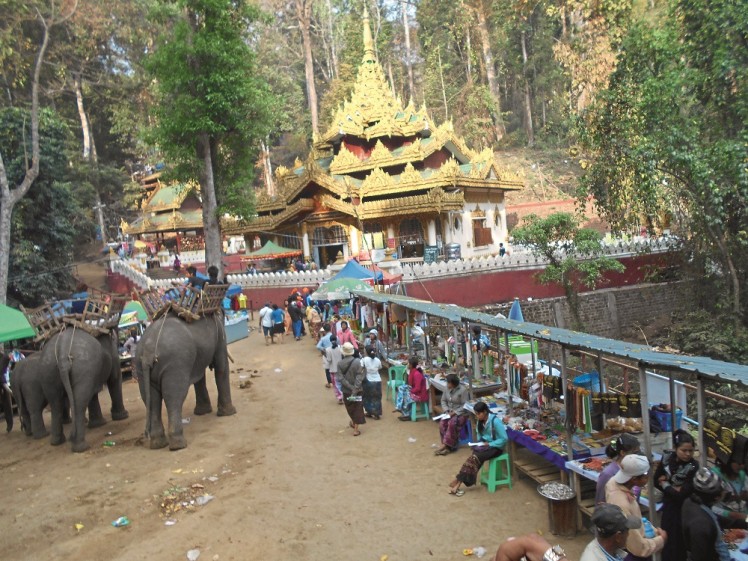
In the 11th century, King Anawrata, who was on the throne of Upper Burma, was converted to Buddhism, but he did not insist that his people should give up their animistic beliefs. So around every Buddhist paya, or pagoda, you can find little nat altars. One stall holder told us that if we said anything nasty or untrue in the forest, the nats would punish us. We are not in the habit of saying nasty things or lying, so we felt we’d probably be all right. Still it never hurts to be careful.
As time went on, we learned more about the elephants and their sin oozies. They love each other and the elephants will do as their sin oozie says, but they will not do this for anyone else. Win San commented that they are best friends and it certainly seemed that way. The elephant’s working day starts at 6:00am and for many it ends at noon, when they are given two kilograms of cooked rice.
Then the sin oozie take off their howdah, ride them into the forest, chain hobble their front ankles and set them free to wander for the rest of the day and night. Some elephants do more transporting between 3:00 and 6:00pm, particularly when there are many (up to 2,000 people) making their pilgrimage to visit the Alaungdaw Kathapa shrine in the cave.
A fitting homage
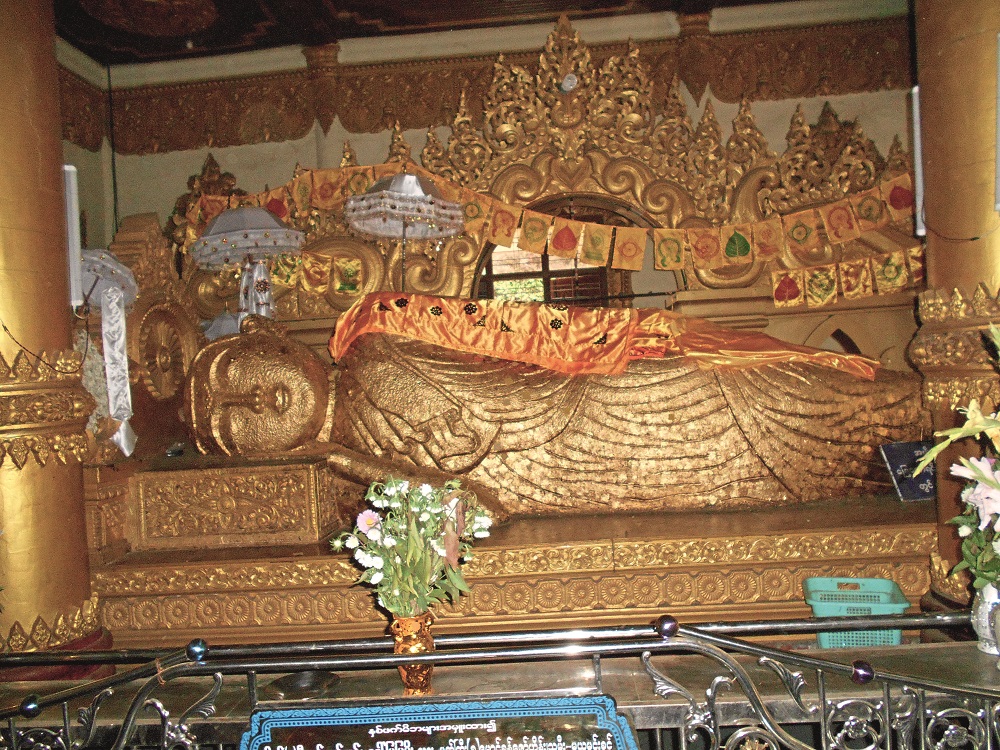
The story of Alaungdaw Kathapa concerns the last Buddha, Buddha Gaudama. Apparently, Alaungdaw Kathapa became the third person to follow the Buddha. He undertook many jobs for him and in return he received the Buddha’s teachings.When the Buddha died, Alaungdaw Kathapa became a hermit and when he died the local people put his body in a cave.
We walked partway down the mountain to visit it. The path was steep so we took it slowly and stopped to investigate villagers’ stalls along the way. When we entered the cave, we were surprised by the magnificent representation of Alaungdaw Kathapa reclining: he looked so peaceful. Behind him, the rock wall seemed to be divided into three huge chambers with each touching the other and all covered in gold leaf.
The King of Upper Burma in those days was Azartatet and he wished to pay homage to the hermit. He looked far and wide and eventually it was the sound of trickling water that led him to the cave. He took many jewels with him and placed them beside the body. After he left, thousands of people came to pay homage, but some thieves stole the jewels.
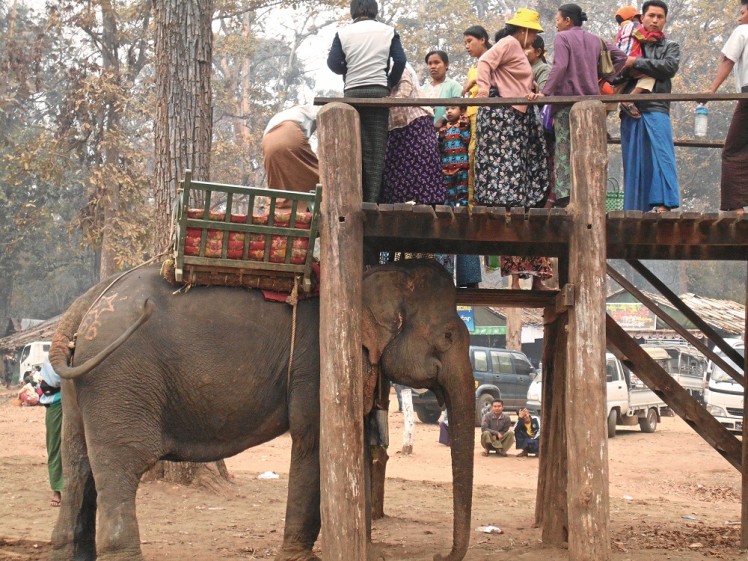
This was upsetting for the people, so they decided to keep the body and the cave closed off. Fortunately there were good nats here. (I had never heard of good nats before, I’d only ever heard of nats who were evil.) The nats pulled the three gigantic stones across the entrance to the cave so nobody could ever again get in. These were the stones we saw covered in gold leaf. Win San and Saya Htay paid homage to the memory of the hermit and we trudged back up the hill.
Next morning it was raining. This was the dry season, mind you, so the pilgrims and monks were delighted and said it must be because the foreigner had come. The foreigner was less than delighted when she heard that Kyaw Mo Swe was still looking for his elephant. Apparently the rain diminishes the sound of an elephant’s bell and he had not yet found her. The monks graciously invited us to have breakfast with them and then told lurid stories of elephants slipping over when the track was wet.
Maybe we could walk, I volunteered to Win San. I thought it preferable than slipping down and off an elephant on the side of a mountain. So, we started to walk with the sayadaw, or abbot of the monastery holding an umbrella over our heads.We got down as far as the Gau Da Ma Pagoda and there were three elephants. All had been willing, but unable, to get up the last part of th emountain to collect us because it was ‘slippy’.
I slid my mind into neutral, climbed aboard and was encouraged to learn that this elephant was only 10 years old and the younger ones tend to be better on their feet. Very happily, we made it unscathed to the bottom of the mountain, boarded a mini-bus, and lived to tell the tale.
So, if you are interested in Buddhism, love elephants, and want to get off the beaten track this is just the place for you. Why not try it?
This article was originally published in The Expat magazine (May 2016) which is available online or in print via a free subscription.
"ExpatGo welcomes and encourages comments, input, and divergent opinions. However, we kindly request that you use suitable language in your comments, and refrain from any sort of personal attack, hate speech, or disparaging rhetoric. Comments not in line with this are subject to removal from the site. "



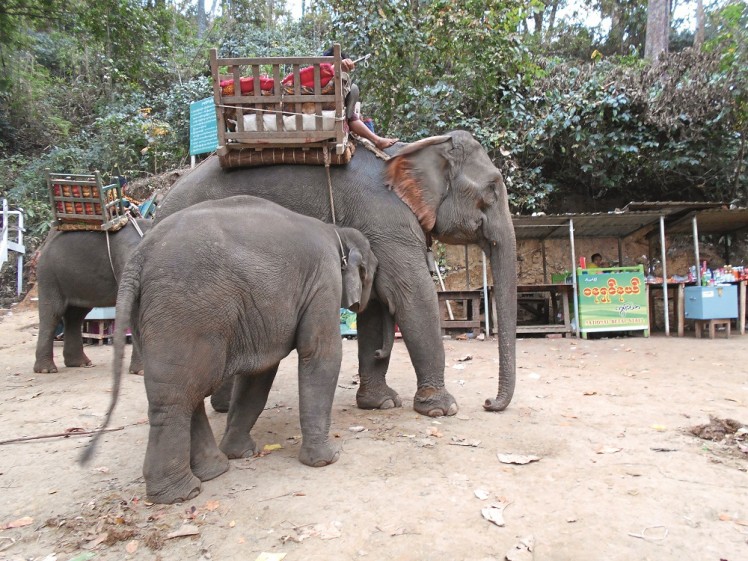
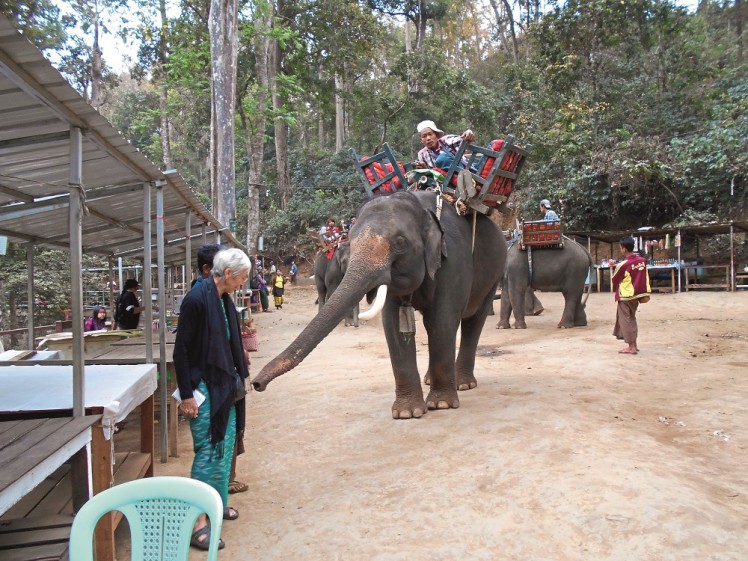
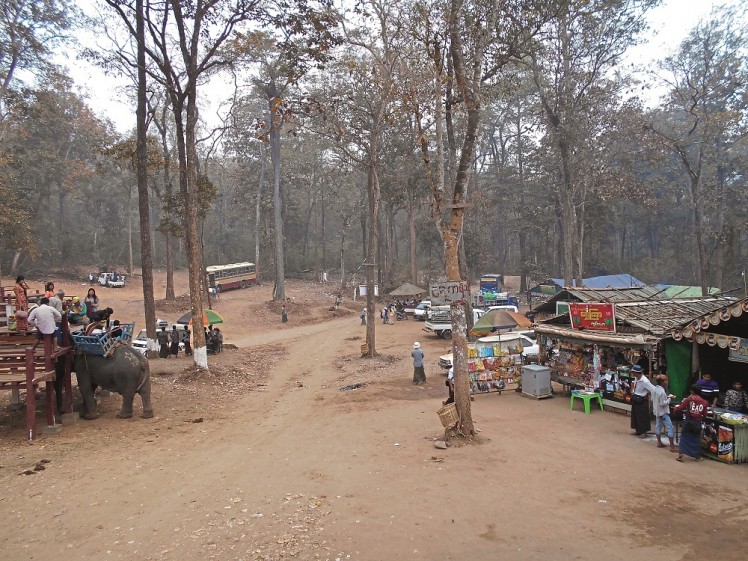
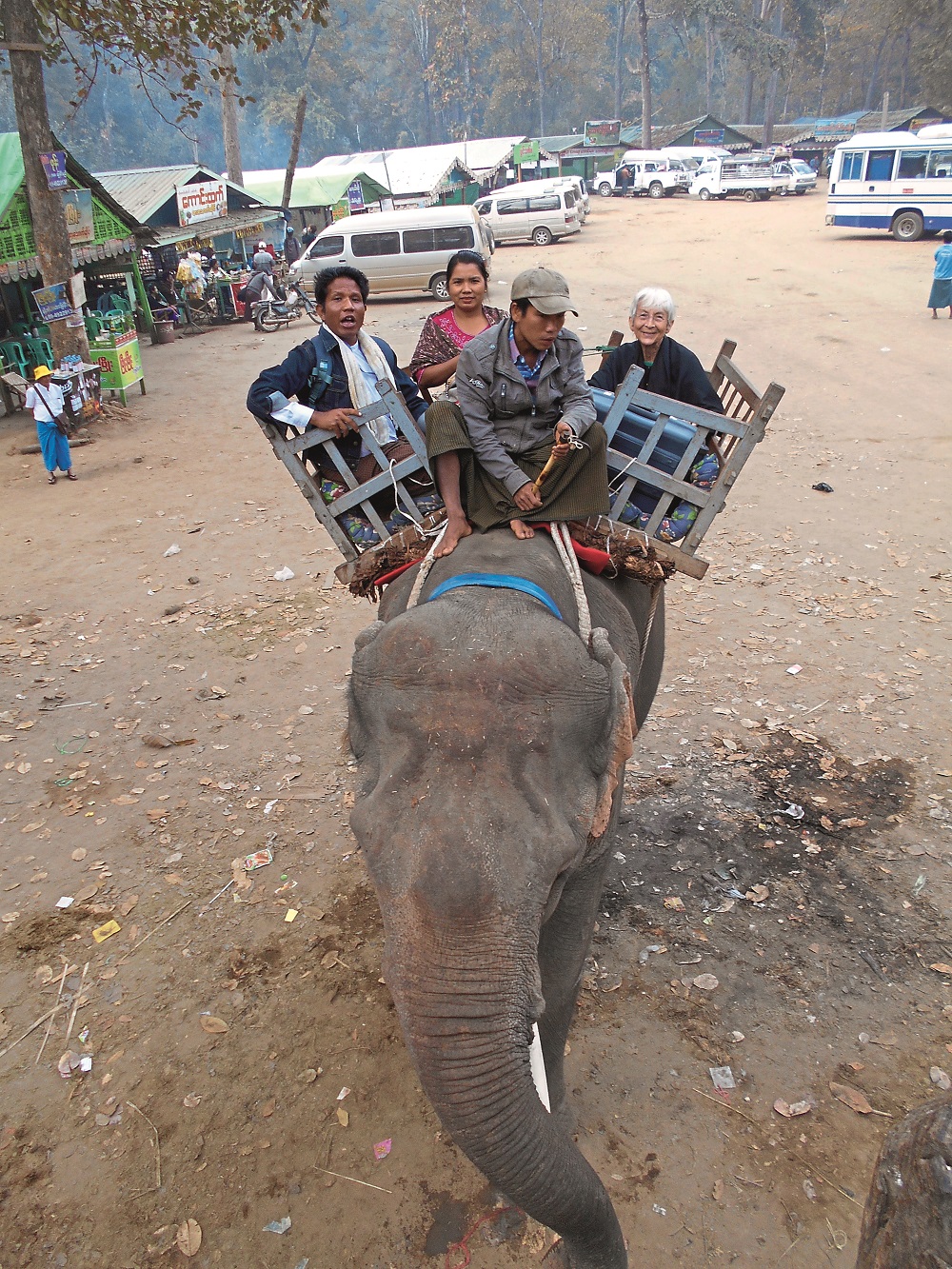




















#dontrideelephants